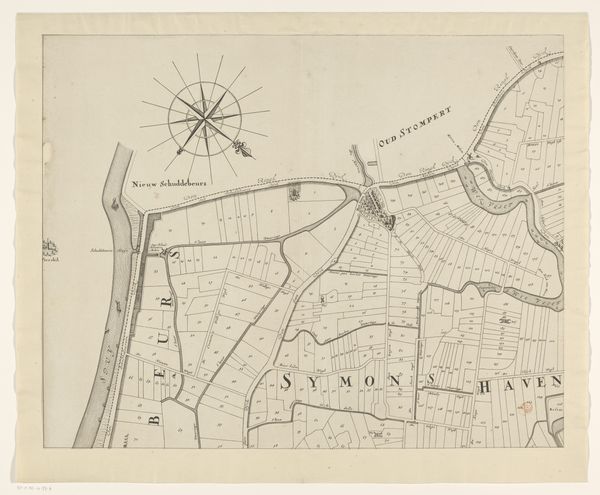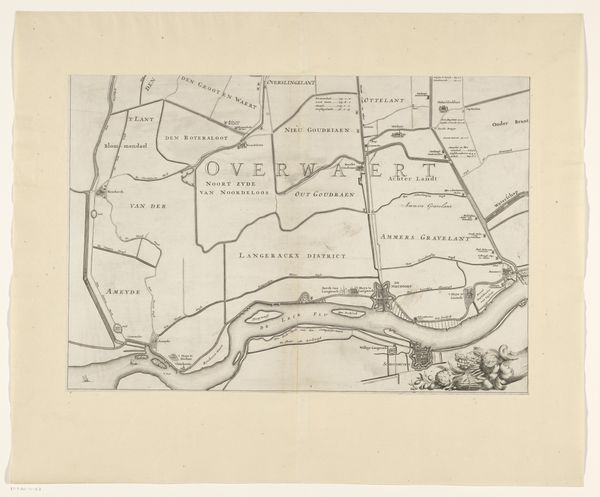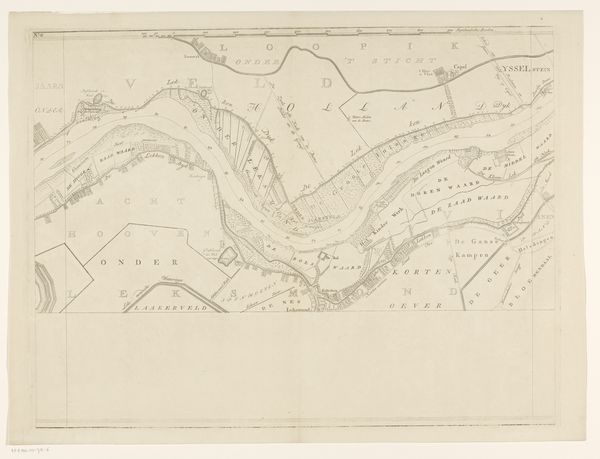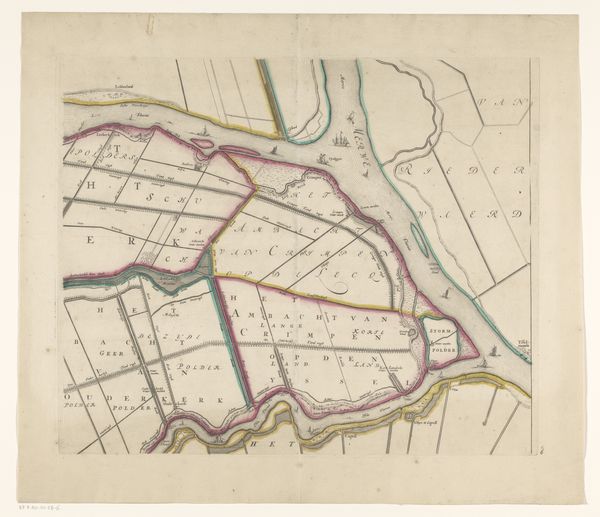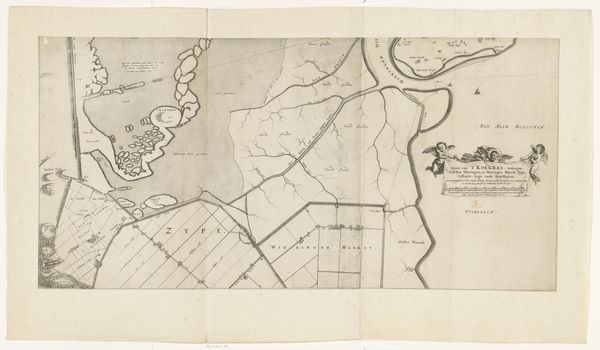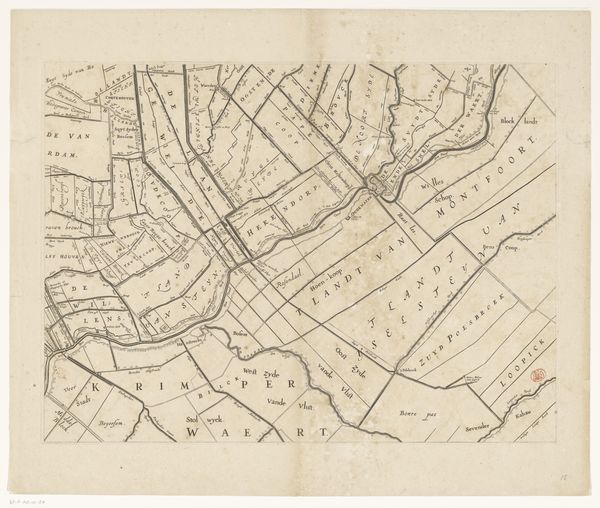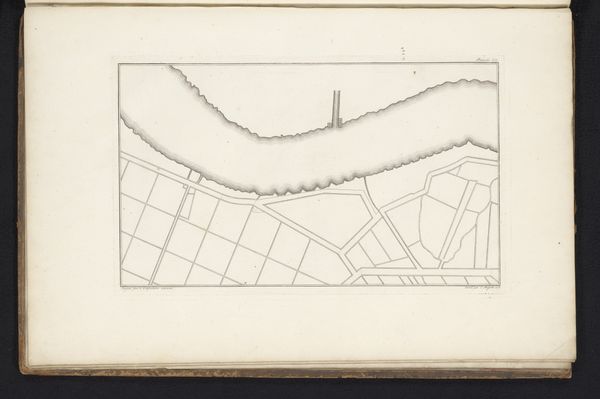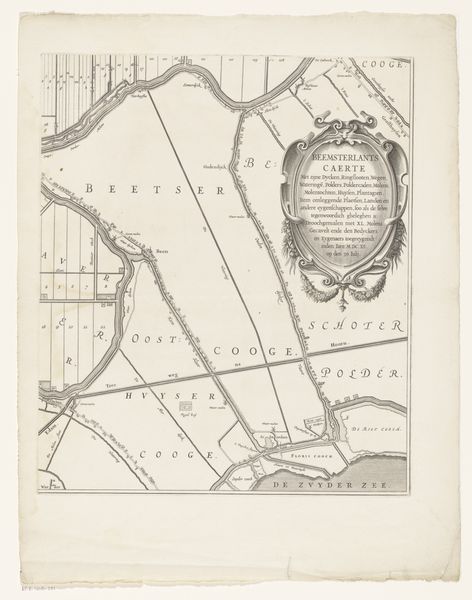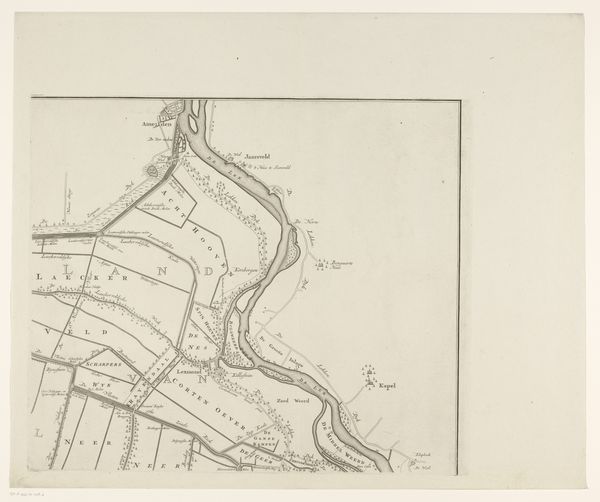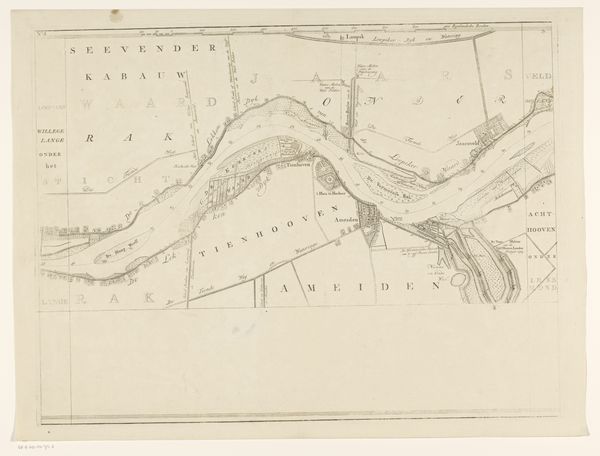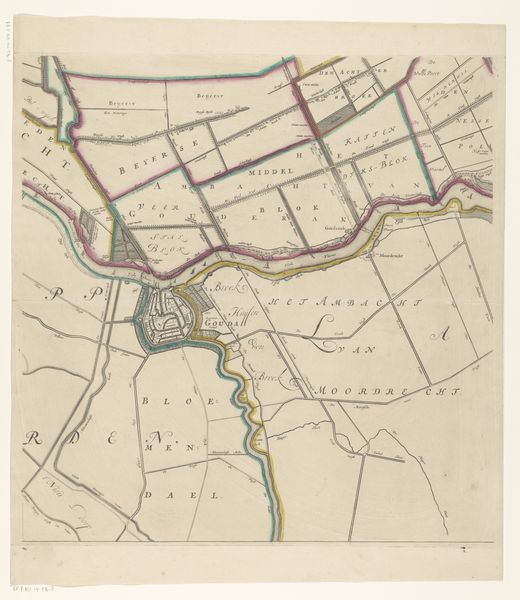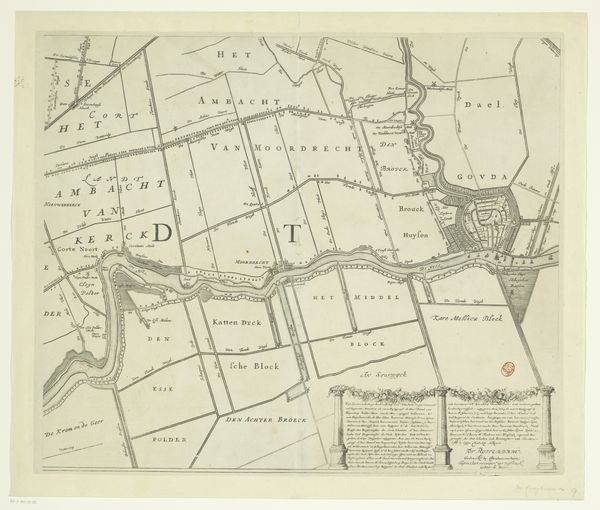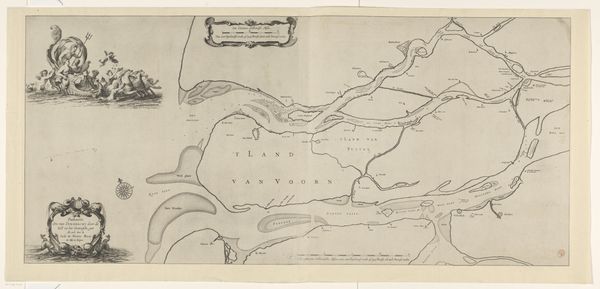
drawing, print, etching, paper, ink
#
drawing
#
dutch-golden-age
# print
#
etching
#
landscape
#
paper
#
ink
#
geometric
Dimensions: height 446 mm, width 581 mm
Copyright: Rijks Museum: Open Domain
Editor: This is "Kaart van Kennemerland en West-Friesland (negende deel)" created in 1680 by Coenraet Decker. It’s a drawing, an etching, a print, rendered in ink on paper, currently at the Rijksmuseum. It's really interesting how geometric it is! How do you see this piece? Curator: This map, more than just a representation of land, speaks volumes about the Dutch Golden Age's ambition to control and organize their environment, using etching and ink. It presents not just a landscape, but a deliberate ordering of space that served both practical and ideological functions. Consider how materials played a key role: the paper's quality affects the map's longevity and dissemination, influencing who has access to this 'knowledge'. Editor: So, the material choice impacts its reach? Curator: Precisely. And etching, unlike painting, enables the easy reproduction of images. The printing enabled a standardized and widely distributable vision of Dutch land, reinforcing the power and vision of its elites. Look closely at how geometric shapes denote land divisions – those aren’t just fields; they signify ownership and cultivation as key resources in society. How are they produced? Who owns them? Who has access to them? Editor: It's amazing how much this tells about the labor behind shaping the Dutch landscape. Curator: Exactly! This map isn't just about geography. It tells about the labor and materials needed to achieve such organized agricultural design. Reflect on that level of production in a global and capitalistic context: what are some resources and economic impacts involved? Editor: I see that this piece displays organization in society, along with who had access and how the Dutch utilized production, down to their material choice. Curator: Yes, and understanding the map's materiality—the paper, ink, and etching process—allows us to see the role this image had within its society. A deep material examination, in this case, broadens into considering global capitalism, colonial ambition and historical context.
Comments
No comments
Be the first to comment and join the conversation on the ultimate creative platform.
